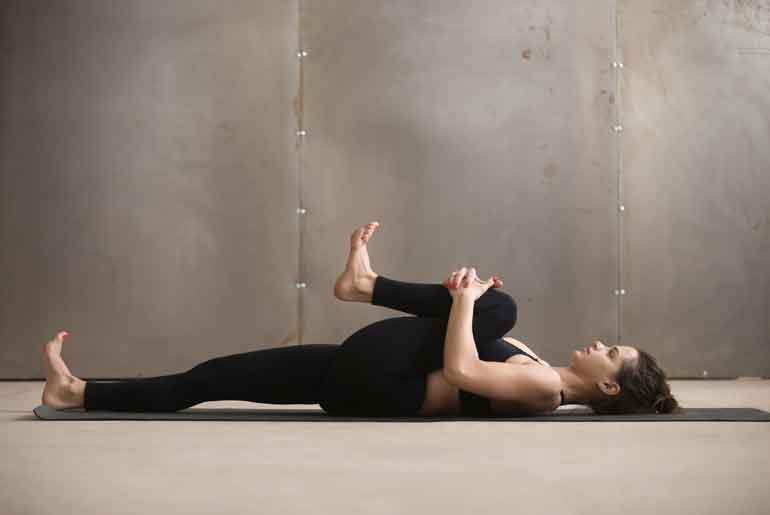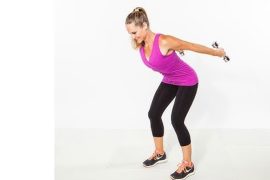Many of you may have suffered a back pain in your lives. The spinal area of your body could be affected sometimes, in case you are experiencing severe back pain. For this reason, you could start performing some exercises as a preventive measure to protect your spine. Hence, whether we experience a pain or not, it is recommended that you must start performing some exercises to keep your spine healthy.
We may have come across the term slipped disc. The spine present in each of your body runs from the neck and goes down further up to the lower back region of the body. Normally, an average person’s body contains 33 bones, which are also called vertebrae and it starts from your neck and goes further down to your lower back region. There are also cushiony discs that are present in between the vertebrae. These cushiony discs hold a central ring that is called nucleus pulposus as well as an outer, rubbery ring that is known as annulus.
In some cases, if you have been feeling a lot of pressure on your back that you have not been used to, there are chances that the nucleus pulposus could come out by way of a rupture in the annulus. This is called as a ruptured disc. This problem could further lead to creating pressure against either one or more spinal nerves that could cause pain or weakness in the neck as well as the arm.
The slipped disc may occur in any section of your spine starting from the neck to the lower back region of your body. Moreover, a slipped disc in individuals could be any one of the four types based on the severity of herniation such as protrusion, prolapse, extrusion or sequestration. Herniation can occur either in the cervical spine (i.e.) neck area or at the lumbar spine, (i.e.) lower back.
Primary Causes and Symptoms
Individuals are at a higher risk of being affected by a slipped disc, if they experience any weight gain, apart from few other factors such as smoking or ageing.
The symptoms you can notice in the cases where herniation is in the cervical spine may be that there could be any pain experienced in the shoulder or neck or even in the medial forearm. The medial forearm could even experience numbness. On the other hand, where herniation is in the lumbar spine, it could lead to sensory loss as well as pain in the back that would show on both your lower leg as well as thigh, apart from some weakness in movement of your leg towards and away from your body and hip flexion.
Slipped disc can be identified by individuals in the following cases:
• There is an unexpected and severe pain that travels in real speed from one end to another in the lower back area of the body.
• A nerve root in the lumbar spine area may experience some irritation that is caused by herniated disc, which could lead to a normal sciatic pain that moves down on to one leg and into the foot.
You can start doing these three exercises to keep your spine healthy and they are as follows:
1. Hip Stretch

You can do some stretching of your hip muscles that can offer some relief to your back. If the hip muscles are tight, there is enough power in them to keep the pelvis out of alignment and might also affect your spine, though not directly. Your pelvis is an important structure, especially when it comes to maintaining your back health.
How to perform Hip Stretch?
• Stand up by keeping your feet at shoulder width distance.
• Now, move half a step back using your right foot.
• Start bending your left knee while transferring your weight to the right hip.
• Your right leg must be kept straight and start reaching downwards to your right leg till you get a feeling of a gentle stretch on the outer part of your hip.
You could perform about 10 stretches in a day.
2. Chin-To-Chest Stretch

Chin-To-Chest Stretch can be done in order to provide relaxation to your neck muscles in case they are overworked during the day. This exercise can be done, while you are seated on a flat bench. You can do it by moving your head at a slow pace onto your chest. It is not compulsory for you to place your hands at the back of your head, while performing this stretch.
How to perform Chin-To-Chest Stretch?
• Keep your neck loose before starting the stretch by turning the head from side to side in a slow and gentle way. Get on to a sitting position by seating yourself on the floor or you can do the stretches in a standing position.
• With your hands placed behind your head, start bending your head forward slowly till your chin touches the top part of the chest.
• Stay in the same position for about 8-10 seconds and raise your head back to the top slowly.
You can do about 8-10 stretches in a day.
You can also use your hands to help you with your stretch. By keeping your palms on the back of your head, start bending your head forward and pull a little down in a gentle manner to improve the range of the stretch.
3. Knee-To-Chest Stretch

Knee-To-Chest Stretch exercise can be performed to obtain flexibility for your lower back muscles. Being a range of motion exercise, you are able to improve the flexibility in your joints when the movements are being done. Moreover, it also helps in reducing stiffness connected to spinal arthritis.
How to perform Knee-To-Chest Stretch?
• Start by lying on your back by bending your knees and keeping your feet flat on the ground.
• Now, slowly lift one of your knees that is bent on to the top till you can grasp your lower leg using both the hands. Keep your fingers twisted right under your knee.
• Start pulling the knee that is bent slowly or you can pull your knees onto your trunk with both your hands.
• While pulling, you can allow your legs, including the pelvis and lower back area to rest as long as you can. In this way, the knees-to-chest is able to reach the lower back muscles better, owing to its passive use.
• Stay in the position for a few seconds and subsequently your leg can be brought back to the floor.
• Now, you can repeat the same on the other side.
You may try and do this stretch for about 8-10 times in a day.
Image Source: www.thespinehealthinstitute.com
Disclaimer:
The information contained in this article is for educational and informational purposes only and is not intended as a health advice. We would ask you to consult a qualified professional or medical expert to gain additional knowledge before you choose to consume any product or perform any exercise.






